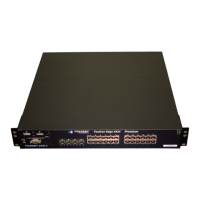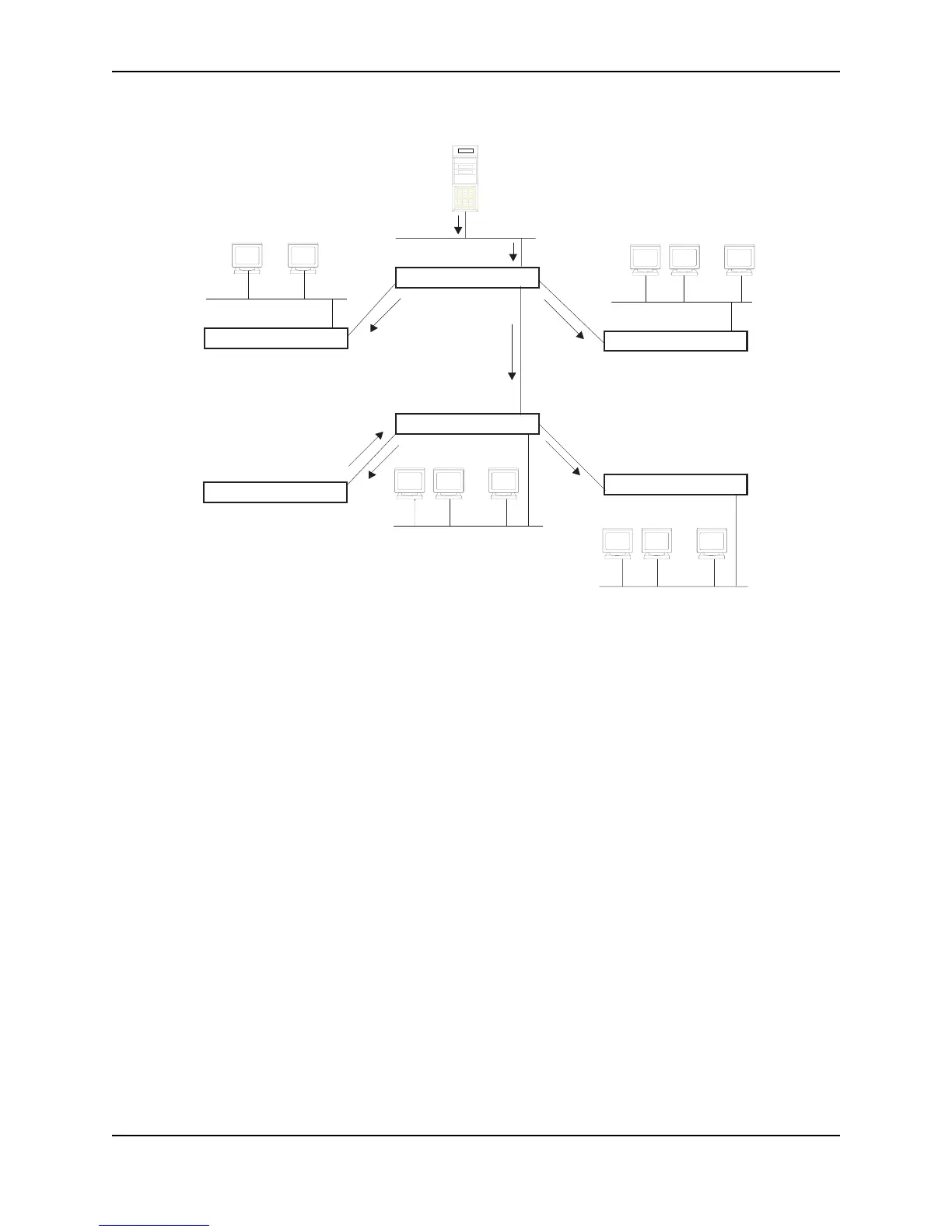Configuring IP Multicast Protocols
December 2005 © Foundry Networks, Inc. 19 - 55
Figure 19.8 Pruning leaf nodes from a multicast tree
Grafts to a Multicast Tree
A DVMRP router restores pruned branches to a multicast tree by sending graft messages towards the upstream
router. Graft messages start at the leaf node and travel up the tree, first sending the message to its neighbor
upstream router.
In the example above, if a new 229.255.0.1 group member joins on router R6, which had been pruned previously,
a graft will be sent upstream to R4. Since the forwarding state for this entry is in a prune state, R4 sends a graft to
R1. Once R4 has joined the tree, it along with R6 will once again receive multicast packets.
You do not need to perform any configuration to maintain the multicast delivery tree. The prune and graft
messages automatically maintain the tree.
Configuring DVMRP
Enabling DVMRP on the Layer 3 Switch and Interface
Suppose you want to initiate the use of desktop video for fellow users on a sprawling campus network. All
destination workstations have the appropriate hardware and software but the Layer 3 Switches that connect the
various buildings need to be configured to support DVMRP multicasts from the designated video conference
server as seen in Figure 19.7.
DVMRP is enabled on each of the Foundry Layer 3 Switches shown in Figure 19.7, on which multicasts are
expected. You can enable DVMRP on each Layer 3 Switch independently or remotely from one Layer 3 Switch by
a Telnet connection. Follow the same steps for each router.
Group
Member
Group
Member
Leaf Node
(No Group Members)
R5
R3
R4
R6
R1
R2
Leaf Node
Leaf Node
Video Conferencing
Server
(207.95.5.1, 229.225.0.1)
(Source, Group)
...
Group
Member
Group
Member
Group
Member
...
Group
Member
Group
Member
Group
Member
...
Prune Message
sent to upstream router (R4)
Interrmediate Node
(No Group Members)
229.225.0.1
229.225.0.1 229.225.0.1

